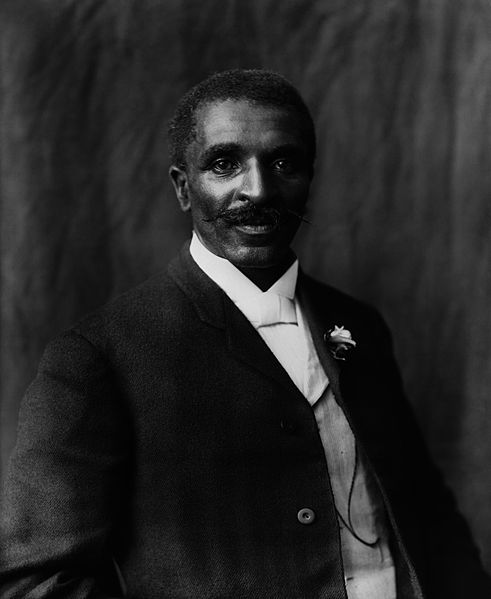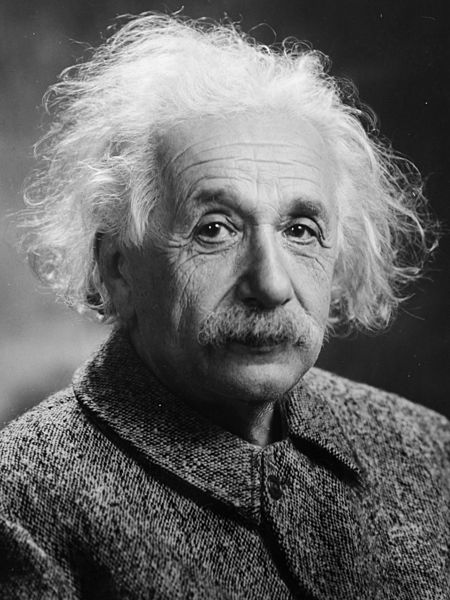Submitted by Madeleine Fuchs Holzer in Collaboration with Teachers from New Visions for Public Schools and the New York City Department of Education.
In 1905 Albert Einstein’s theory of special relativity was big news. At the same time, a man named George Washington Carver, a genius in his own right, quietly worked on issues more concrete and closer to home. As part of Carver: A Life in Poems (Front Street, 2001), a poetry collection by Marilyn Nelson that explores the life of George Washington Carver, the poem “1905” brings us into Carver’s work with poor farmers and opens our eyes to more of the discoveries and inventions of the less touted man.
This lesson plan provides a series of activities you can use with your students before, during, and after reading “1905.” Feel free, of course, to adapt them to the needs and interests of your students, and differentiate as makes sense. The methodology used here levels the playing field for diverse students to experience poetry and helps set the stage for reading more complex texts as you address the Common Core State Standards.
A Note About Vocabulary
Ask your students keep a running list on the front board of the words they read and hear that they do not understand. You can either conduct a separate vocabulary lesson on these words where students try to figure out their meaning from context and connections or go through this process as you progress through the activities below.
CCSS.ELA-Literacy.CCRA.R.7
Integrate and evaluate content presented in diverse media and formats, including visually and quantitatively, as well as in words.
CCSS.ELA-Literacy.CCRA.SL.2
Integrate and evaluate information presented in diverse media and formats, including visually, quantitatively, and orally.
Interdisciplinary Connections
English Language Arts, Social Studies


Left: George Washington Carver by Frances Benjamin Johnston (1906). Credit: Public Domain. Right: Albert Einstein by Orren Jack Turner (1947). Credit: Public Domain.
Tell your students that before they read the poem “1905”, they will engage in some activities that will help them understand the poem better. Please do not tell them that the poem is about George Washington Carver. The following activity will not work if you do so!
Activity 1: Honing Noticing Skills
Objective: Students will make close observations of photographs of two people, rather than relying on stereotypes.
- Divide your class into small groups. Give half the groups the photograph of George Washington Carver. Give the other half the photograph of Albert Einstein.
- Ask your students to write down what they notice in the photographs. Tell them to be careful not to make stereotyped generalizations if they know who the person is. They must write down what they see.
- Ask them to share their observations with other members of their group and add to their own lists, as appropriate.
Activity 2: Pair Share
Objective: Students will compare and contrast observations.
Ask your students to pair up with someone who had a different picture and share what they noticed with their partner. They should note similarities and differences.
Activity 3: Whole-Group Discussion
Objective: Students will synthesize their observations.
- Ask your students to report back what they noticed in the photographs and compare and contrast what they saw. (It is possible that students will not mention the difference of race, because they feel they are raising a tender topic. Prompt them to mention it, as appropriate.)
- Ask them if they know who the people are in the photographs. If they do not know, tell them. Do they know what these people accomplished? Do not add to their knowledge, just record what they know.
Activity 1: Silent Reading
Objective: Students will identify words, images, and phrases in the poem that jump out at them.
- Project “1905” from Poets.org
- Ask your students to read the poem silently. As they read, they should write down the words, images, and phrases that jump out at them. This includes words and phrases they do not know.
Activity 2: Listening to the Poem
Objective: Students will further identify words, images, and phrases that jump out at them.
Ask one student to read the poem out loud. Then ask another student to read the poem. While they are reading, the students who are listening should write down any other words, images, and phrases that jump out. They should also pay close attention to the sounds in the poem. Do they hear any repetitions?
Activity 1: Small-Group Work
Objective: Students will synthesize what they learned about George Washington Carver from reading and listening to a poem.
Ask your students to get into small groups and to share the words, images, and phrases in “1905” that jumped out at them. What do these words, images, and phrases tell them about George Washington Carver? What role does the repetition of sounds play? How does it help them understand the poem? Ask each small group to synthesize what they learned into a cooperatively written paragraph that they will share with the class.
Activity 2: Group Presentations
Objective: Students will present their description of George Washington Carver to the class using proper presentation skills.
Ask each group of students to prepare a presentation about what they have learned for the entire class. Remind them that they must speak clearly so that other students can understand what they are saying. They should also be prepared to answer two or three questions from their peers.
Note: The activities below were created by a group of New York City school teachers who worked as Poetry Leaders with the Academy of American Poets.
1. Knowing what they now do about George Washington Carver, ask your students to look at a history book entry about him. With their new information, how would they change the entry?
2. Ask your students to write letter from the farmer in the poem “1905” to a family in a northern city. In the voice of the farmer, they should explain what he learned from George Washington Carver and how it will improve the farmer’s way of life.
3. Ask your students to create a commercial or advertising poster for a George Washington Carver “Modernization Service.”
4. Ask your students to find out through research the kind of prejudice Albert Einstein faced in his life. How is it similar to, or different from, the prejudice George Washington Carver experienced?
